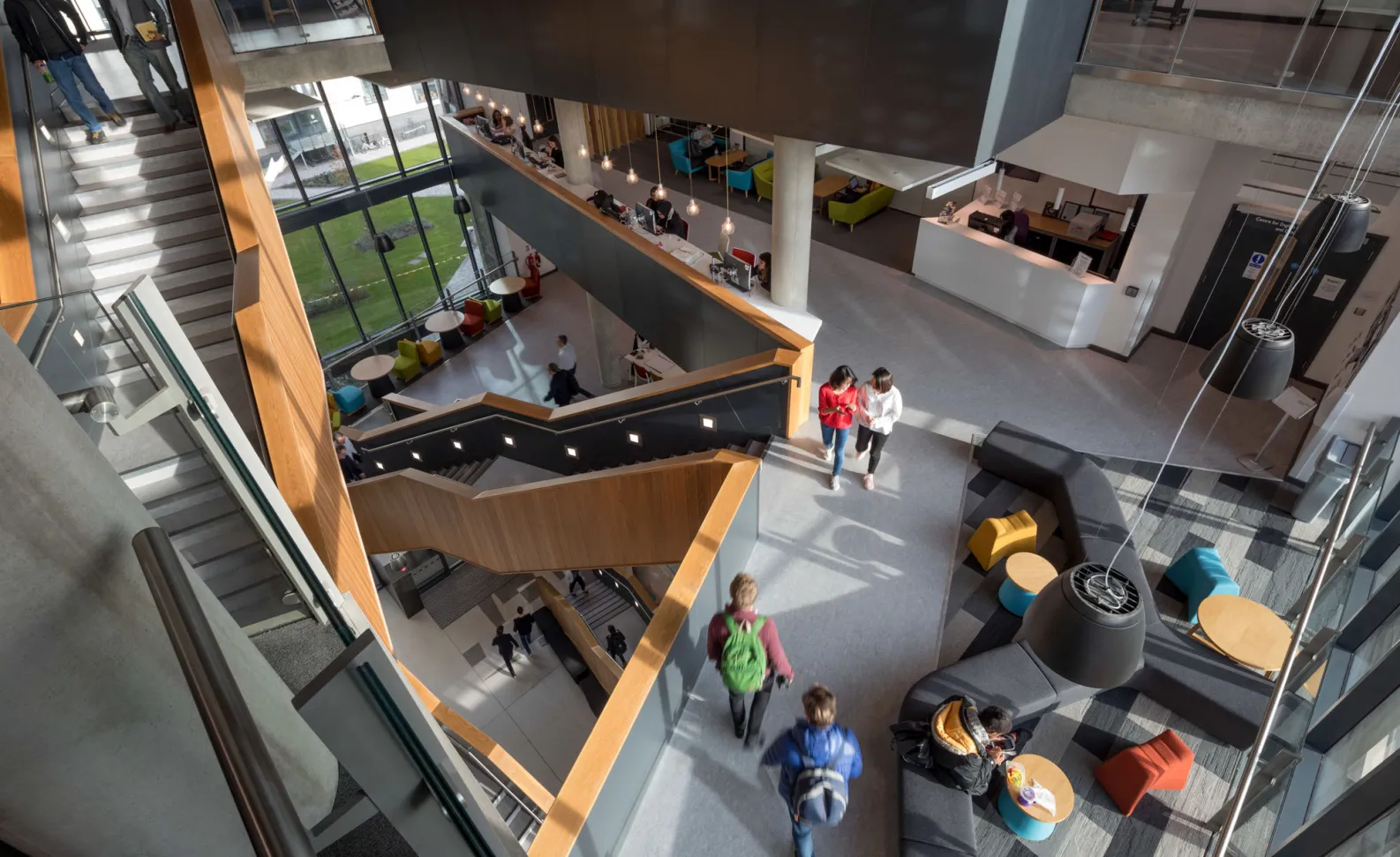Insight
A Literal Department for Education – Transforming Our Inner-City Spaces
16 Oct 2023

Kieran Dyer
Director
This week, delegates from across the educational community will descend upon Manchester Central for the annual Education Estates conference, held in conjunction with the Department for Education. The event, held across two days, will place emphasis on transformational techniques that could alter the course of educational design and ensure the sector’s sustainable future. Here Kieran Dyer, associate director, cites the increasing demand for school spaces, which could be fulfilled by revisioning our high streets as hubs of learning.
Whenever we read the headlines around retail and consumer footfall, we become enwrapped in arguments of online consumerism, pandemic hangovers, Brexit and economic changes. Most recently, John Lewis boss Dame Sharon White echoed this, citing a circle of taxation, changing working practices and environmental transport policies, each owing to the more than 6,000 stores that have closed across the UK in the past five years.
It was somewhat fortuitous then, that as Education Estates arrives on our doorsteps, we got to be involved in a design concept seeing us re-envision one of the flagships of the declining shopping experience in recent years - the humble department store.
Shopping for education
At Pick Everard, we are not against the drive to revive our UK high streets. In fact, we’ve helped design ‘in-store-experiences’ for brands like Selfridges, but as our interactions with town centres continue to evolve, we must make strong decisions on their use, and look at co-location techniques that integrate public and educational spaces together, sustainably, and collaboratively.
Our decision was to enter a RIBA Journal competition that reimagined department stores as education entities – inner-city schools that place community at the fore and help re-address a deepening crisis of oversubscribed pupil numbers across the country.
First, we took a real-world example – Kendals in Manchester – an archetypical deep plan department store. We mapped out how we would transform this space into a vibrant learning environment across seven storeys, capable of accommodating 750 pupils. At the core of our concept – ReStorED - curriculum areas act as shop windows - encouraging students to part with their ‘time’ to learn a subject – literally ‘shopping’ for their future within accessible, open learning environments. A journey is created through a central staircase, connecting each area, with a climbing wall and indoor green space incorporating a sense of fun and biophilic principles into our design choices.
Sustainability in mind
A central tenet to our architectural landscape was reuse and retrofit – utilising principles to achieve EnerPHit and reducing embodied carbon through repurposing the existing fabric. Internally, learning spaces are created with Oriented Strand Board (OSB) material. Its light, economical and adaptable nature allows inner partitions to be created and moved at will, with collaborative learning or closed off nooks for quiet study, dependent on subject need.
From an exterior perspective, we envisioned the roof as outdoor sports space, powered by renewable energy and accompanied by sensory gardens and allotments, encouraging students to really connect with biodiversity and think deeper about the reusability of their environment. The beehive for example, would see the food hall below sell its very own honey to surrounding communities.
One of the central questions Education Estates will pose is how the sector plans its future, particularly with an ever-growing population. Our RIBA venture really questioned our choices around regeneration, the decline of the high street but more so challenging the norms we have become accustomed too.
The department environment, in its traditional guise presents obvious advantages in shopper freedom, but where this is increasingly being challenged, perhaps it’s time we took schools out of their rural environments and refashion them in our hybrid town centre estates. The department store building is not dead, but we must think better, together, creatively and collaboratively on their future to ensure learning from one generation to the next.
If you are planning your next educational project, please do not hesitate to visit our service page.
Education
We are privileged to work on hundreds of education projects that are improving the lives of children and young adults from pre-school, right through to higher education.
